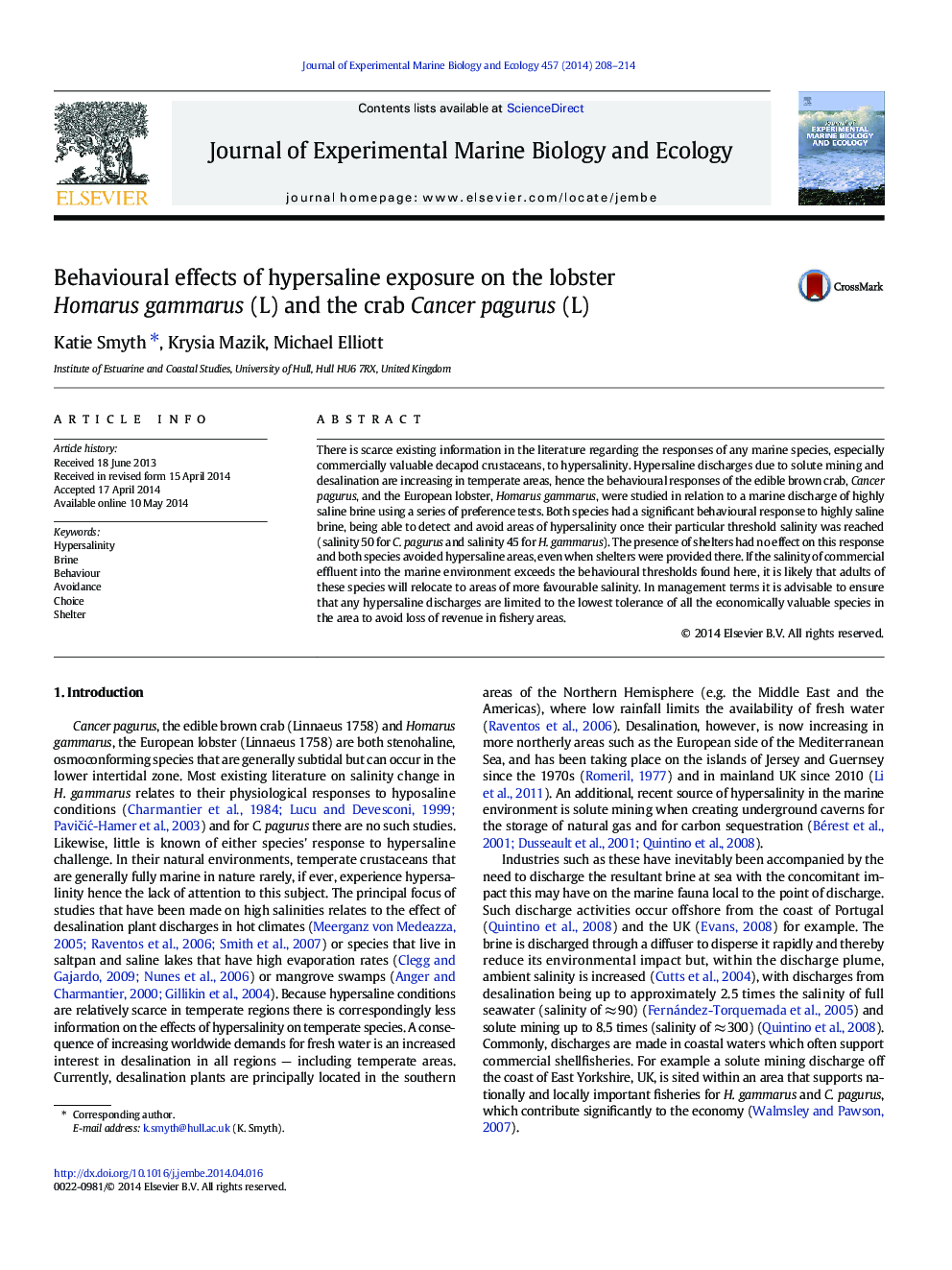| Article ID | Journal | Published Year | Pages | File Type |
|---|---|---|---|---|
| 6304226 | Journal of Experimental Marine Biology and Ecology | 2014 | 7 Pages |
Abstract
There is scarce existing information in the literature regarding the responses of any marine species, especially commercially valuable decapod crustaceans, to hypersalinity. Hypersaline discharges due to solute mining and desalination are increasing in temperate areas, hence the behavioural responses of the edible brown crab, Cancer pagurus, and the European lobster, Homarus gammarus, were studied in relation to a marine discharge of highly saline brine using a series of preference tests. Both species had a significant behavioural response to highly saline brine, being able to detect and avoid areas of hypersalinity once their particular threshold salinity was reached (salinity 50 for C. pagurus and salinity 45 for H. gammarus). The presence of shelters had no effect on this response and both species avoided hypersaline areas, even when shelters were provided there. If the salinity of commercial effluent into the marine environment exceeds the behavioural thresholds found here, it is likely that adults of these species will relocate to areas of more favourable salinity. In management terms it is advisable to ensure that any hypersaline discharges are limited to the lowest tolerance of all the economically valuable species in the area to avoid loss of revenue in fishery areas.
Related Topics
Life Sciences
Agricultural and Biological Sciences
Aquatic Science
Authors
Katie Smyth, Krysia Mazik, Michael Elliott,
